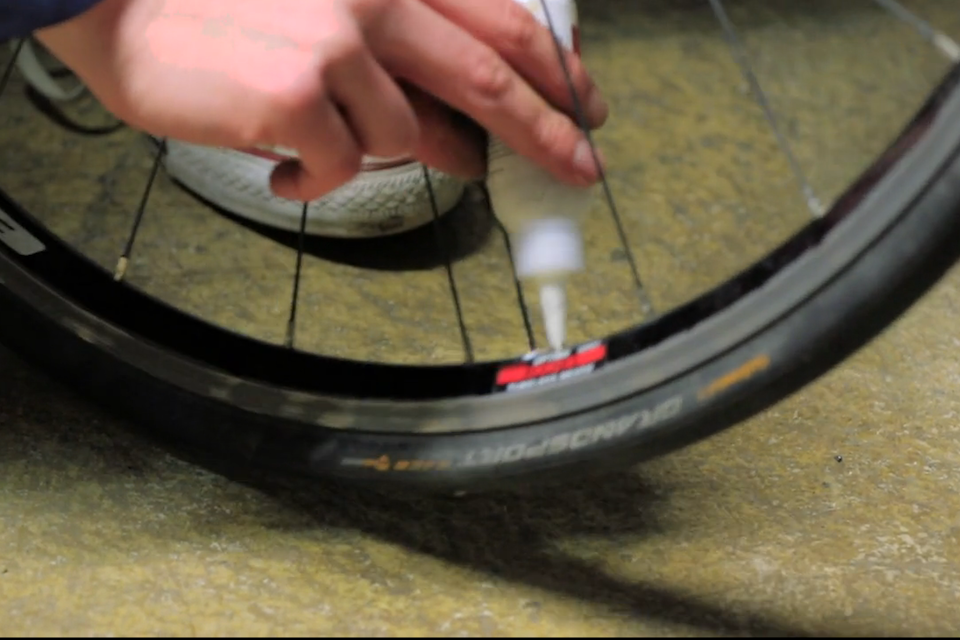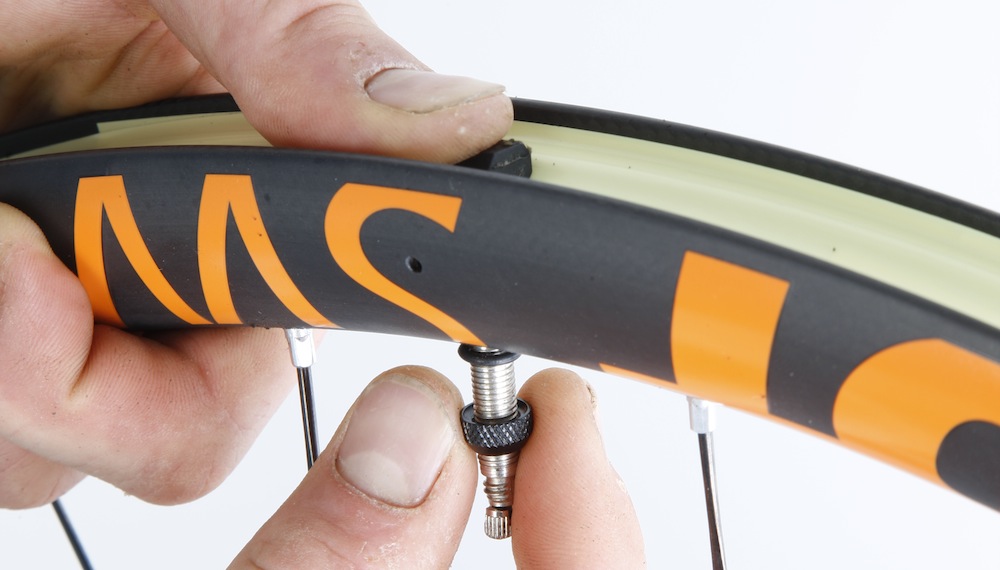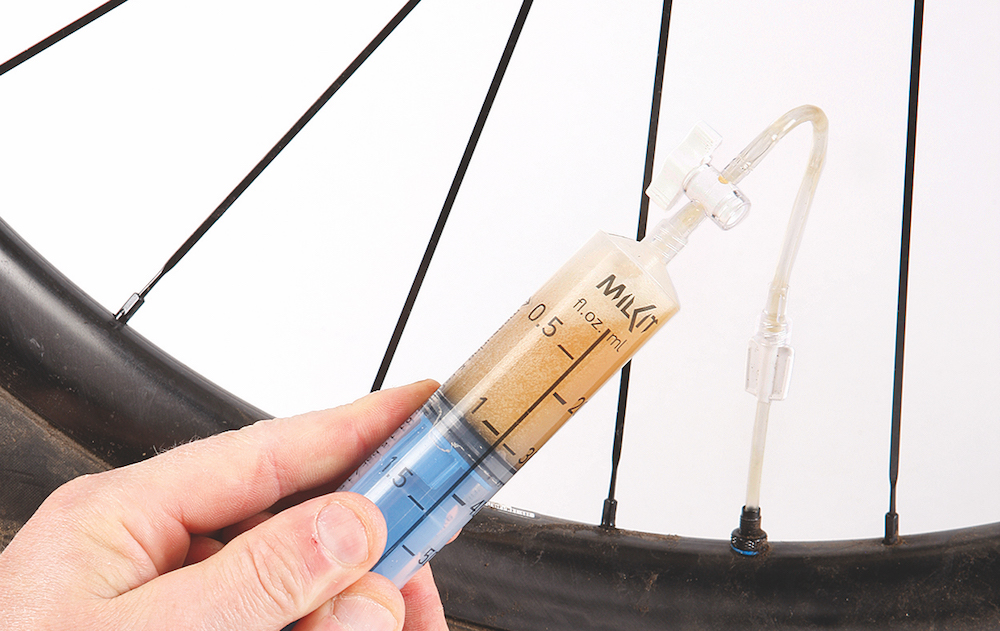Is the tubeless system flawed for narrower tyres?
Do the higher pressures of road tyres really make a qualitive difference?


It’s been quite a while now since the cycling world’s first adoption of tubeless technology. Since then, it’s become ubiquitous in the off-road world, with clincher versions of the top end tyres dropped from the lines years ago.
But despite the industry’s efforts to inculcate a similar transformation out on the road, it’s fair to say that the reception has continued to be rather lukewarm.
Putting this down to roadies simply being reticent to change doesn’t quite seem to be the full story. Although not ones to abandon a good tradition without a due reason, if there’s a clear enough performance gain new technologies will be adopted. It’s not as if steel frames and box section rims remain equally as prevalent as clinchers continue to be.
So, what’s the deal with road tubeless? What are the lingering issues, and do they stand to be solved?
Tubeless bliss

The benefits of tubeless tyres are quite well-versed, so we’ll just run through them quickly here.
Perhaps most significantly, the use of sealant means that punctures from thorns or flints are self-healing – as well as there being no inner tube to get a pinch puncture from bottoming out the tyre on a square edge hit.
This enables the use of lower pressures than you could otherwise get away with on clincher tyres, providing a more comfortable and faster ride over rough surfaces as the wheels aren’t getting pinged all over the place.
Get The Leadout Newsletter
The latest race content, interviews, features, reviews and expert buying guides, direct to your inbox!
Also. when inflated to the same pressure as a tubed system, tubeless tyres set up with sealant have been shown to have around the same rolling resistance as a clincher with latex tubes. Some tests have even returned the result that tubeless is the outright fastest.
Tubeless troubles

But in response to the well-versed benefits, there are the well-versed negatives. Some mechanics are starting to notice some additional issues coming to light – but we’ll get onto that further down.
To quickly cover the most common criticisms, the higher pressures of road tyres (compared to gravel or MTB) means that the sealant can struggle to block up the hole and instead just spray out as the tyre slowly deflates. Although it might seal the hole at some point, it can struggle to stay that way once pumped up again to road pressures.
This tends to be more of an issue on narrower tyres, where the pressures are higher. But credit where it’s due, it’s not uncommon for the sealant to do its intended job, but in being less reliable than lower pressure systems, the other negatives have more weight.
Latex-based sealants will typically last around three months – but in hot conditions this can be as little as just one – before needing to be topped up again. This extra layer of maintenance – combined with the issues dried up lumps of latex can cause with the balance of your wheels at high speeds – means that tubeless on the road can end up just not being worth the trouble.
Latest developments
Martin Girdwood is the owner of Velo-Tech Cheshire and a professional bike mechanic of nine years. Lately, he’s started to notice a pattern of failures for 25mm tubeless tyres. Girdwood said: “I’ve had customers – whose bikes I’ve been regularly servicing and who keep their tyres at sensible pressures – instead of getting a simple hole, having the tyre actually rip and suffering a blowout.”
“I used to do a lot of sportive work before the lockdowns, and I regularly came across people experiencing similar problems. It’s not something I’ve been seeing in 28mm tubeless tyres and wider or in 25mm clincher tyres, it does seem to just be something particular to 25mm – and across a range of brands too.”
“I’m not entirely sure what the exact cause is, but with those narrower tubeless tyres you’ve got such a small surface area at such incredible pressures compared to a mountain bike one. From what I’ve been seeing, I’d recommend sticking with tubes for 25mm.”
Of course, any observations that are more qualitative in nature and don’t have the backing of a thorough statistical analysis can simply be chalked up to confirmation bias. Although that said, if you genuinely tried forming your beliefs based only on what is rigorously statistically supported, you would find yourself left with far fewer beliefs than you might expect.
Nevertheless, when we got in contact with Jakob Massen, product manager at Schwalbe, he told us: “From the feedback that we have from the market, we cannot share the opinion that our 25mm tubeless tyres are more prone to the described malfunctions than our 28mm tyres.”
“Over the years we’ve become the benchmark concerning road tubeless derailing safety. We work closely with multiple rim manufacturers and the ETRTO to ensure tyre and rim compatibility. Our extensive compatibility tests are performed regularly and always with the current rim developments in mind.”
Tubeless tyres should be run at lower pressures when compared with clinchers, SRAM has a handy guide here. For reference, when we inputted a 65kg rider, on an 8kg bike with 700c wheels (hooked, 20mm internal) and 28mm tyres, the calculator suggested 61 PSI in the front and 65 PSI in the rear.
What the experts say
Jakob Massen
“We do not observe blowout issues with our products if the correct pressures and tyre-rim width combinations are used. However, at lower pressures the probability for cuts and punctures will decrease and since you’ll run a wider tyre with lower pressure there is a connection here.”
Martin Girdwood
“I’ve noticed blowouts with 25mm tubeless tyres being much more prevalent than in 28mm tubeless or 25mm clincher. For me, I’ll be sticking to running my 25c tyres with tubes.”

Thank you for reading 20 articles this month* Join now for unlimited access
Enjoy your first month for just £1 / $1 / €1
*Read 5 free articles per month without a subscription

Join now for unlimited access
Try first month for just £1 / $1 / €1

After winning the 2019 National Single-Speed Cross-Country Mountain Biking Championships and claiming the plushie unicorn (true story), Stefan swapped the flat-bars for drop-bars and has never looked back.
Since then, he’s earnt his 2ⁿᵈ cat racing licence in his first season racing as a third, completed the South Downs Double in under 20 hours and Everested in under 12.
But his favourite rides are multiday bikepacking trips, with all the huge amount of cycling tech and long days spent exploring new roads and trails - as well as histories and cultures. Most recently, he’s spent two weeks riding from Budapest into the mountains of Slovakia.
Height: 177cm
Weight: 67–69kg
-
 'I'll take a top 10, that's alright in the end' - Fred Wright finishes best of British at Paris-Roubaix
'I'll take a top 10, that's alright in the end' - Fred Wright finishes best of British at Paris-RoubaixBahrain-Victorious rider came back from a mechanical on the Arenberg to place ninth
By Adam Becket Published
-
 'This is the furthest ride I've actually ever done' - Matthew Brennan lights up Paris-Roubaix at 19 years old
'This is the furthest ride I've actually ever done' - Matthew Brennan lights up Paris-Roubaix at 19 years oldThe day's youngest rider reflects on 'killer' Monument debut
By Tom Davidson Published